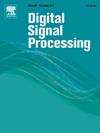MBDBFormer: a multimodal bridge dual branch Transformer for person re-identification
IF 2.9
3区 工程技术
Q2 ENGINEERING, ELECTRICAL & ELECTRONIC
引用次数: 0
Abstract
A key challenge in the person re-identification (ReID) task is the extraction of robust and discriminative pedestrian features. However, the sensitivity of RGB images in complex scenes to light, viewing angle differences and occlusion seriously affect the stability of feature extraction. To address the above problems, we propose a Multimodal Bridge Dual Branch Transformer (MBDBFormer) by combining CNN and Transformer. First, we use the luminance component in RGB and IHS with its frequency domain transformed low and high frequency components (I) as multimodal inputs for image preprocessing, so that the network takes into account both light adaptation and color information. Second, to effectively fuse the feature advantages of the two modalities, the preprocessed image information is input into a bridge branch network consisting of a multilayer down sampling network, and outputs one global and four local feature information through Transformer coding. Finally, using the dynamic allocation of attention weights, focusing on strengthening the feature expression of discriminative regions such as edges and textures, we designed the Gated Dynamic Attention and Feature Interaction Mechanism (GDFM), which establishes the long-range dependency between RGB and I feature, and achieves the complementary optimization of the two modal features. It enables the output fusion features to retain the rich color information of the RGB modality while incorporating the illumination robustness of the I modality. A number of experimental results show that our proposed method is better than the state-of-the-art method on the Market1501, DukeMTMC, MSMT17 generalized dataset and the Occluded-Duke occlusion dataset, which verifies the effectiveness of our method on the task of person re-identification.
MBDBFormer:用于人员再识别的多模态桥式双支路变压器
人再识别(ReID)任务的一个关键挑战是提取鲁棒性和判别性的行人特征。然而,复杂场景下RGB图像对光线、视角差异和遮挡的敏感性严重影响了特征提取的稳定性。为了解决上述问题,我们提出了一种将CNN和Transformer相结合的多模态桥式双支路变压器(MBDBFormer)。首先,我们使用RGB和IHS中的亮度分量及其频域变换的低频和高频分量(I)作为图像预处理的多模态输入,使网络同时考虑光适应和颜色信息。其次,为了有效融合两种模式的特征优势,将预处理后的图像信息输入到由多层下采样网络组成的桥式分支网络中,通过Transformer编码输出1个全局和4个局部特征信息。最后,利用注意力权重的动态分配,着重强化边缘和纹理等判别区域的特征表达,设计了门控动态注意力与特征交互机制(GDFM),建立了RGB和I特征之间的远程依赖关系,实现了两种模态特征的互补优化。它使输出融合特征在保留RGB模态的丰富色彩信息的同时结合I模态的照明鲁棒性。大量实验结果表明,本文方法在Market1501、DukeMTMC、MSMT17广义数据集和occlusion - duke遮挡数据集上优于现有方法,验证了本文方法在人物再识别任务上的有效性。
本文章由计算机程序翻译,如有差异,请以英文原文为准。
求助全文
约1分钟内获得全文
求助全文
来源期刊

Digital Signal Processing
工程技术-工程:电子与电气
CiteScore
5.30
自引率
17.20%
发文量
435
审稿时长
66 days
期刊介绍:
Digital Signal Processing: A Review Journal is one of the oldest and most established journals in the field of signal processing yet it aims to be the most innovative. The Journal invites top quality research articles at the frontiers of research in all aspects of signal processing. Our objective is to provide a platform for the publication of ground-breaking research in signal processing with both academic and industrial appeal.
The journal has a special emphasis on statistical signal processing methodology such as Bayesian signal processing, and encourages articles on emerging applications of signal processing such as:
• big data• machine learning• internet of things• information security• systems biology and computational biology,• financial time series analysis,• autonomous vehicles,• quantum computing,• neuromorphic engineering,• human-computer interaction and intelligent user interfaces,• environmental signal processing,• geophysical signal processing including seismic signal processing,• chemioinformatics and bioinformatics,• audio, visual and performance arts,• disaster management and prevention,• renewable energy,
 求助内容:
求助内容: 应助结果提醒方式:
应助结果提醒方式:


